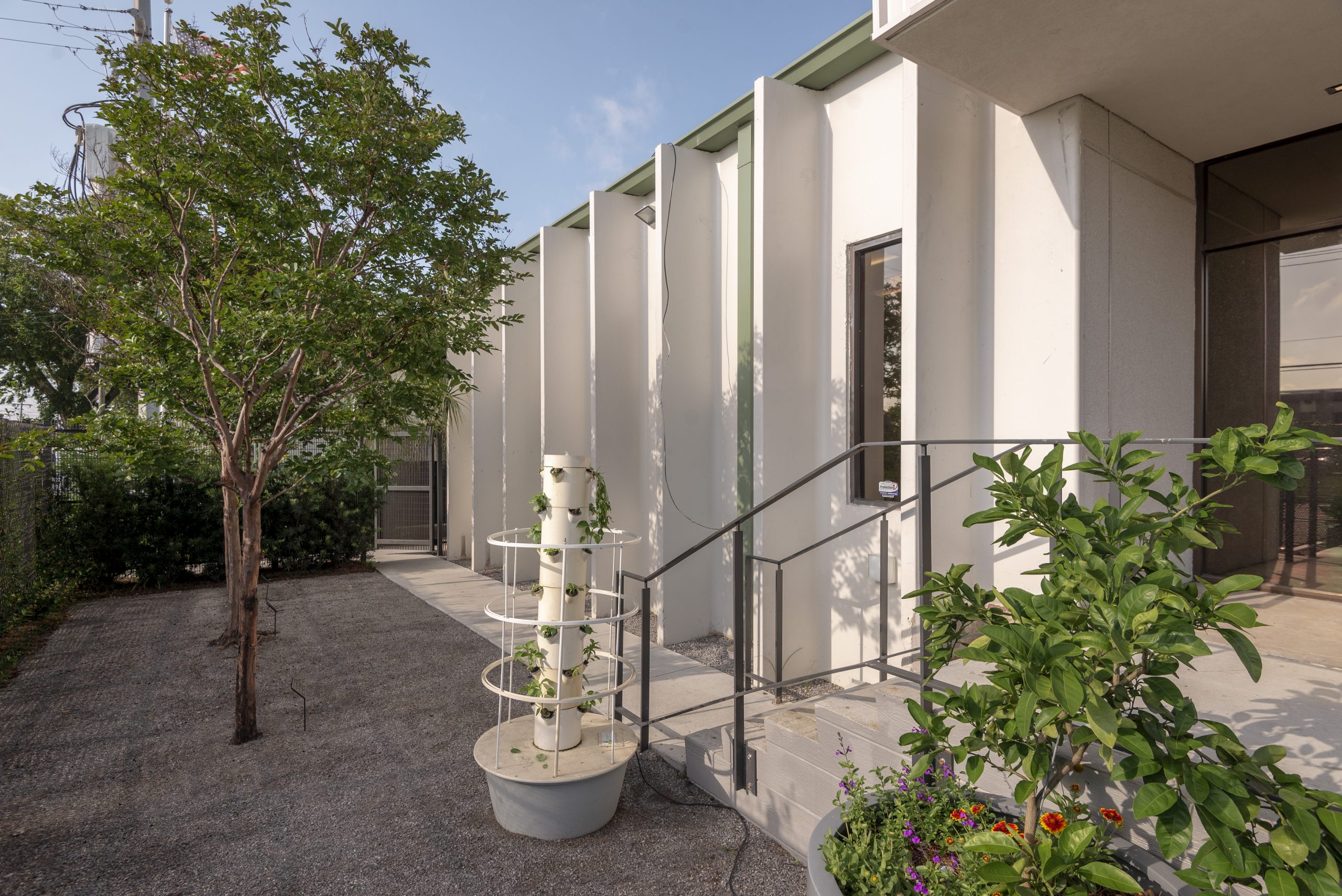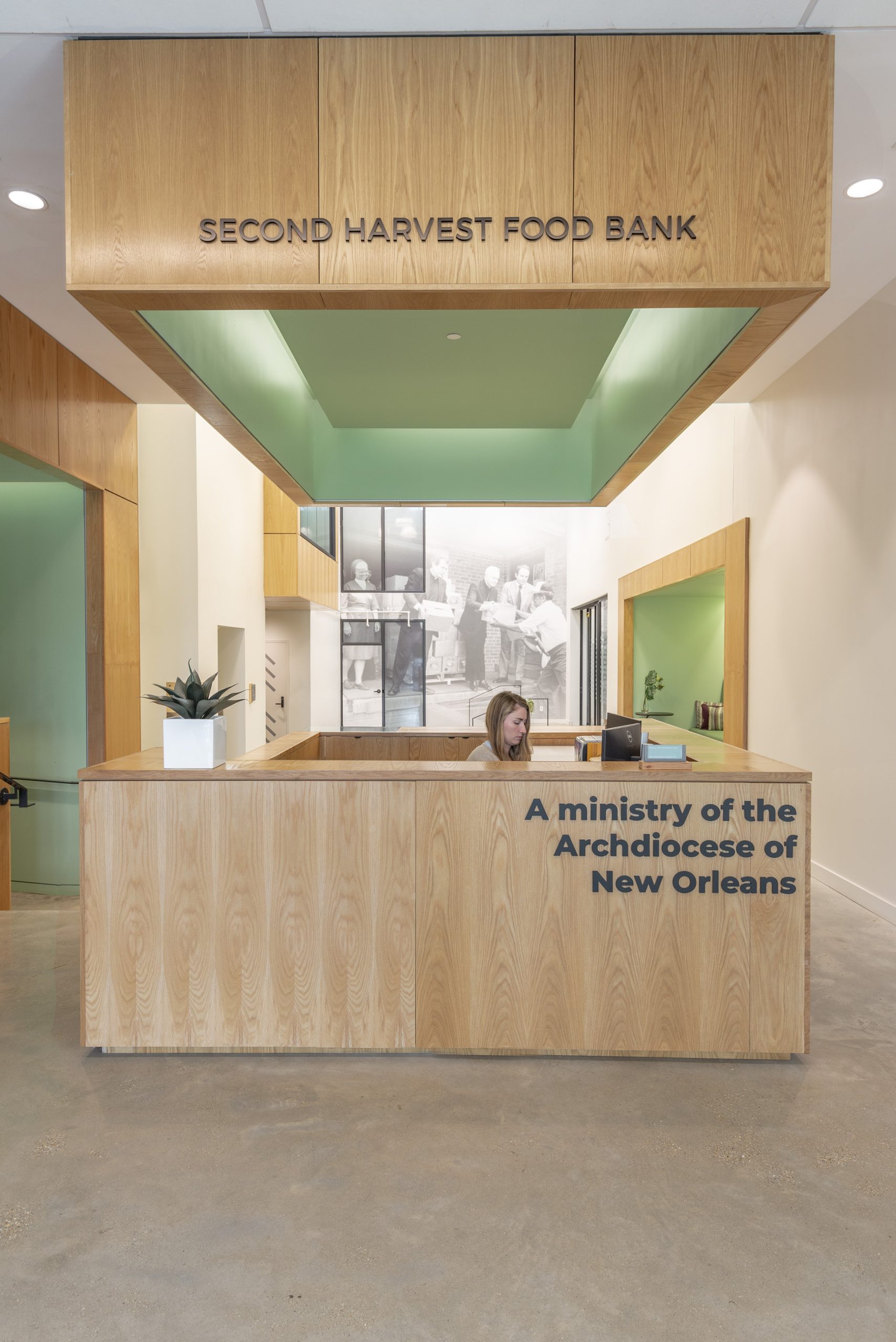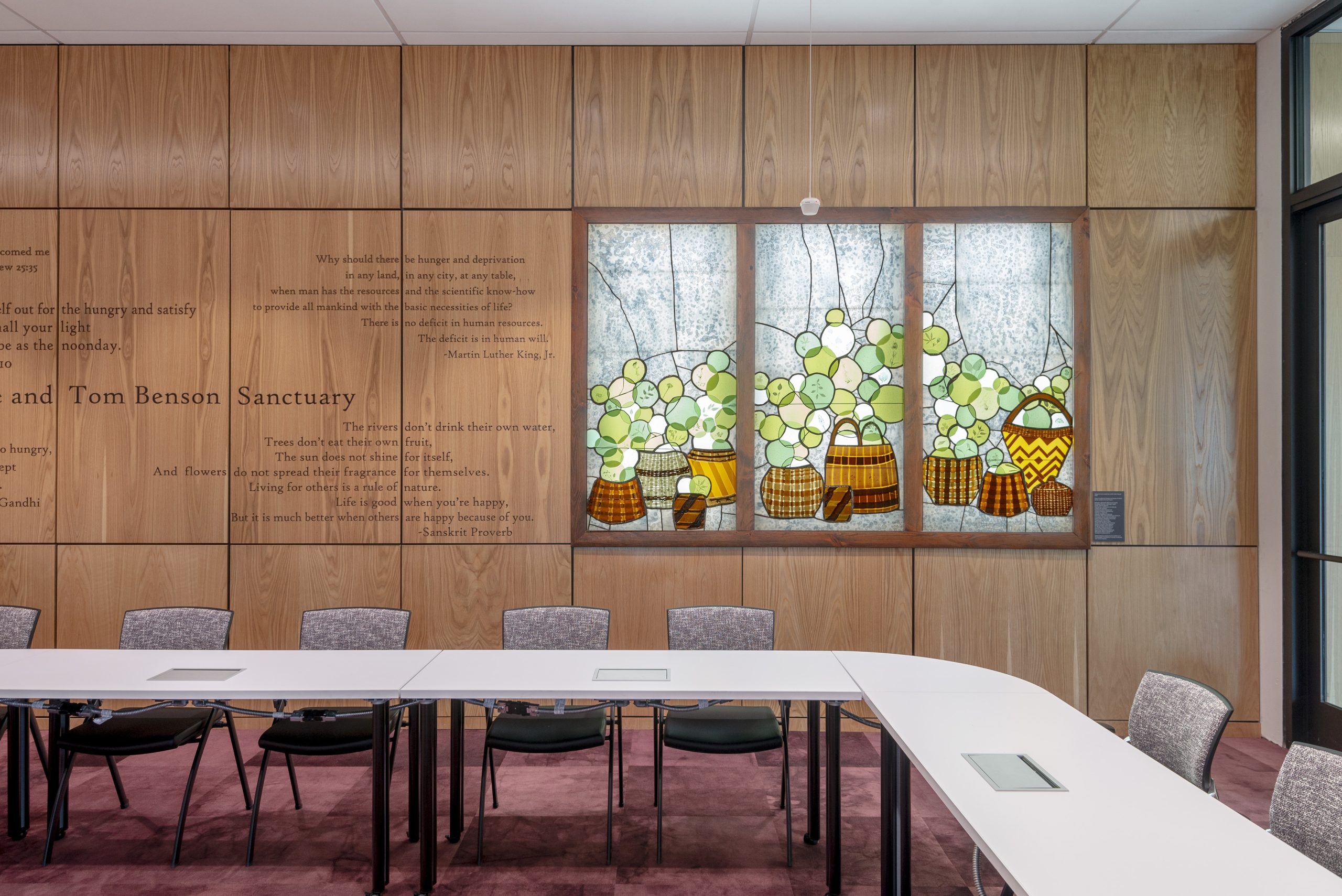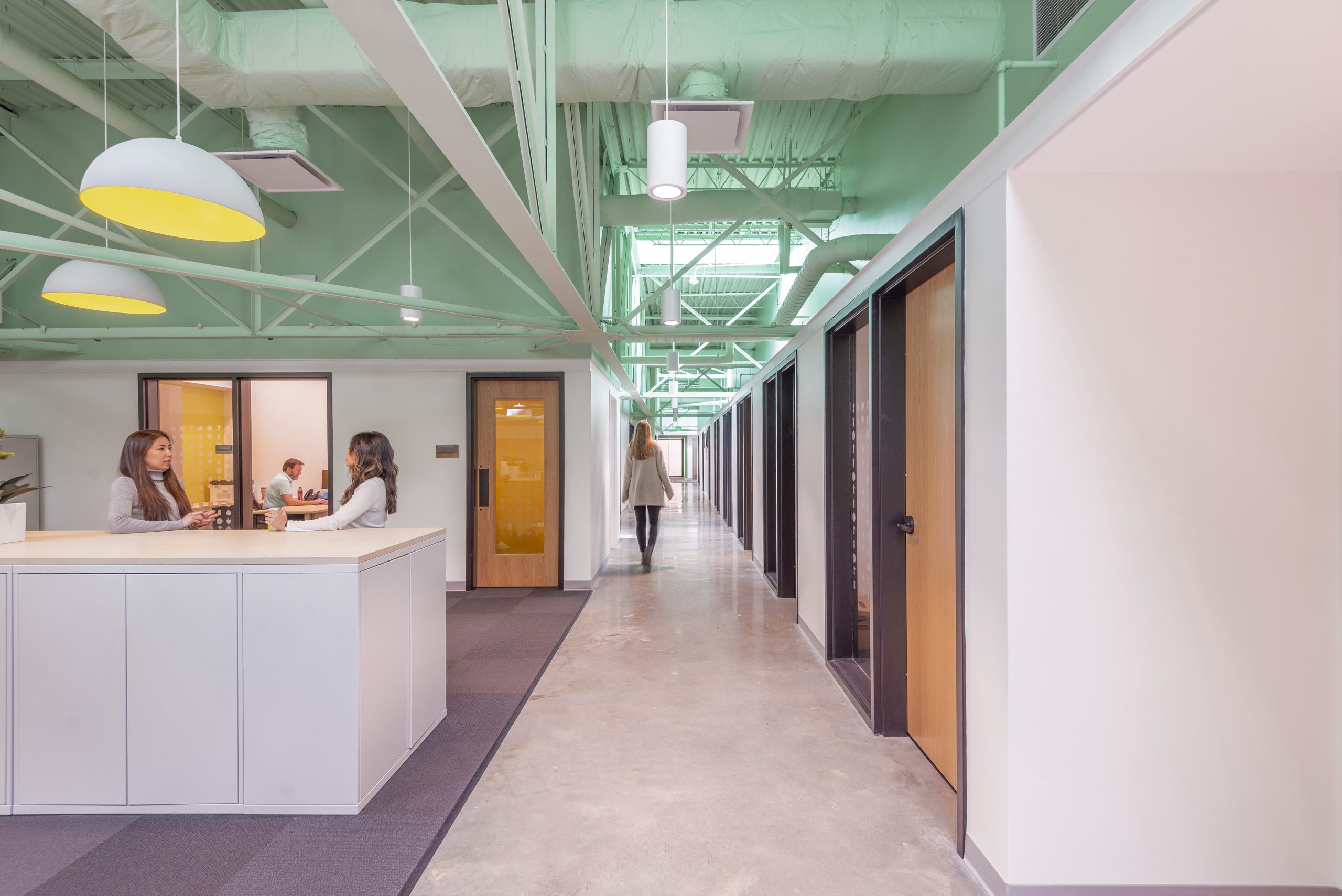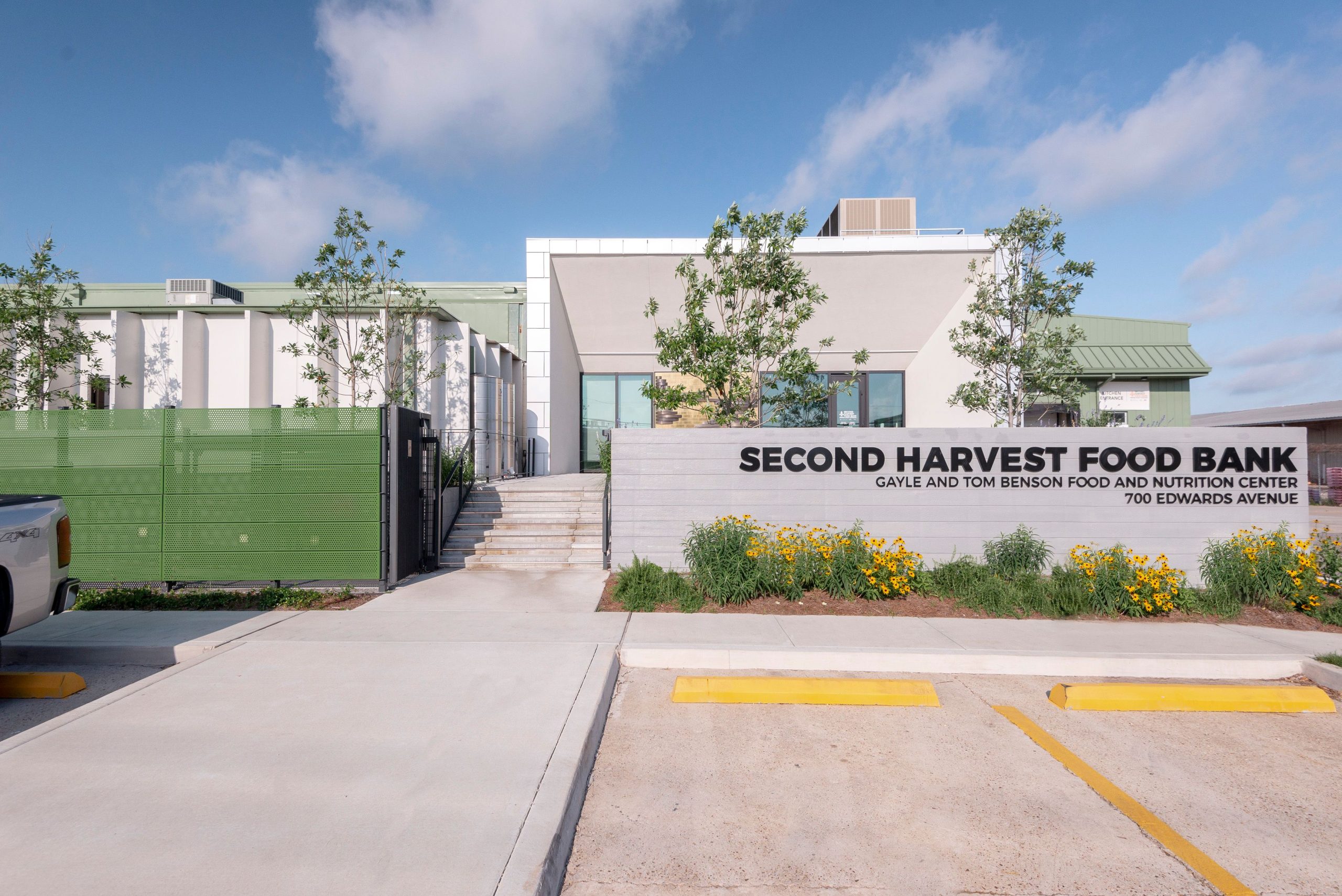When New Orleans-based Second Harvest, the region’s largest food bank, needed to reconsider its 200,000 square-foot warehouse, it called on architects at EskewDumezRipple.
Second Harvest serves 32 million meals and 210,000 people a year, and deals not just with high demand during storms and hurricanes, but also on a day-to-day basis. During the pandemic, its meal count skyrocketed.
For 10 years, it’s been growing rapidly in size and staff – often in chaos. “They have a ‘make it work, get it done, and make it do’ attitude,’” says Kim Trang Nguyen, project architect at EskewDumezRipple.
Over time, its building and functions began to overlap. Administrative offices were attached to the warehouse, and the public accessed the food pantry where volunteers, staff and deliveries also converged. “They realized that the public interface needed more revamping for education and advocacy, and the organization needed a better place to host functions,” she says.
The first intervention was to recreate its front entry and the way people pass through it. “It became more organized and experiential in how they use it,” says Jose Alvarez, project manager at EskewDumezRipple.
The idea was to create a new means of distributing people to different places. One was to an exhibition kitchen where the public can learn how to cook, grow food and prepare meals. Another was to a conference room – a multi-functional area for education, outreach, meeting with employees and volunteer training.
“Volunteers now can sign up at the main entrance, wait until a training room is ready to seat them and then go into the warehouse,” Nguyen says.
The food pantry now has its own separate entrance where the community can come by and pick up food. And off the lobby is boardroom and a sanctuary that reaches back to Second Harvest’s religious roots, since it was started by an archbishop.
In the warehouse, the architects also added 27,000 square feet of new office space – on a newly created second floor. “We utilized 40-foot-tall warehouse space and put a mezzanine up there,” Alvarez says.
When Second Harvest’s president and CEO approached the firm about a redesign, the emphasis was on health and wellness – and moving away from canned food to growing it.
“A piece of the design includes hydroponic systems that were donated to them that they wanted to integrate into the public interface,” says Nguyen. “They have huge groups come in for informational outreach.”
Here, EskewDumezRipple has developed a sensitive design intervention, to be sure. But the firm also worked with a dedicated community group to serve and educate the people of New Orleans – and beyond.
For more, go here.


